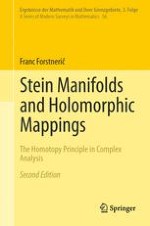This book, now in a carefully revised second edition, provides an up-to-date account of Oka theory, including the classical Oka-Grauert theory and the wide array of applications to the geometry of Stein manifolds.
Oka theory is the field of complex analysis dealing with global problems on Stein manifolds which admit analytic solutions in the absence of topological obstructions. The exposition in the present volume focuses on the notion of an Oka manifold introduced by the author in 2009. It explores connections with elliptic complex geometry initiated by Gromov in 1989, with the Andersén-Lempert theory of holomorphic automorphisms of complex Euclidean spaces and of Stein manifolds with the density property, and with topological methods such as homotopy theory and the Seiberg-Witten theory.
Researchers and graduate students interested in the homotopy principle in complex analysis will find this book particularly useful. It is currently the only work that offers a comprehensive introduction to both the Oka theory and the theory of holomorphic automorphisms of complex Euclidean spaces and of other complex manifolds with large automorphism groups.
